
Inflammatory risk and CV events without obstructive coronary artery disease
We are delighted to append the link/copy of this knowledge expanding and practice changing publication in The Lancet. We are a proud member of the ORFAN consortium and the writing committee. This…
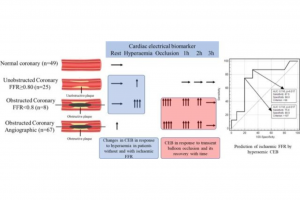
An Experimental Observation to Changes in Cardiac Electrical Biomarker
Cardiac electrical biomarker (CEB), an indicator of ischaemia-induced change in myocyte polarity, has been proposed for diagnosis of acute coronary syndrome. However, effect of coronary occlusion on CEB has not…
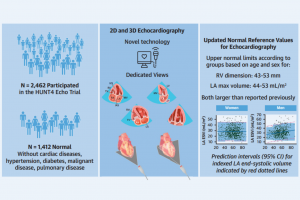
Normalized Echocardiographic Values From Guideline-Directed Dedicated Views
Continuous technologic development and updated recommendations for image acquisitions creates aneed to update the current normal reference ranges for echocardiography. The best method of indexing cardiac volumes is unknown. Click…
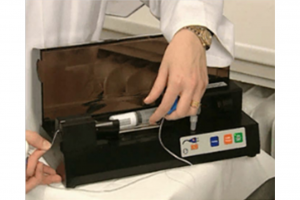
Contrast echocardiography – BSE guidelines
The latest achievement of our research group is the involvement in the National guidelines by British Echo Society on Contrast echocardiography. Ultrasound contrast agent (UCA) has been well established as…
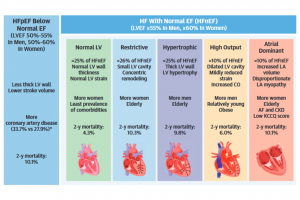
Clinical Features of Heart Failure With Normal Ejection Fraction
Here is an interesting insight from the ASIAN-HF Registry on Heart failure and left ventricular ejection fraction in the normal range (HFnEF) being understudied. Click here to read the full…
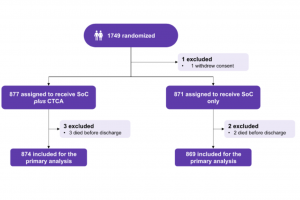
CCTA improves appropriate prescription of secondary preventative medications and medical treatment for patient with coronary disease/heart attack
Computed tomography coronary angiography (CTCA) offers detailed assessment of the presence of coronary atherosclerosis and helps guide patient management. We investigated influences of early CTCA on the subsequent use of…
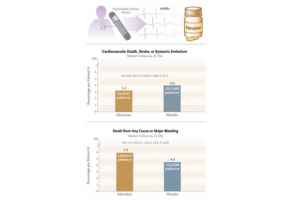
Anticoagulation with Edoxaban in Patients with Atrial High-Rate Episodes
Device-detected atrial high-rate episodes (AHREs) are atrial arrhythmias detected by implanted cardiac devices. AHREs resemble atrial fibrillation but are rare and brief. Whether the occurrence of AHREs in patients without…
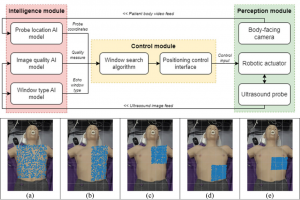
The first steps – echo-robot
Echocardiography is an effective tool for diagnosing cardiovascular disease. However, numerouschallenges affect its accessibility, including skill requirements, workforce shortage, and sonographerstrain. Continue reading the full article by clicking here.
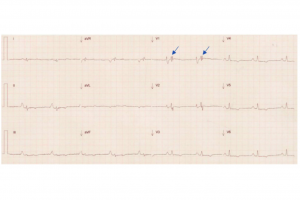
Myocarditis as a trigger for the expression of biventriculararrhythmogenic cardiomyopathy in desmosomal gene mutation
Arrhythmogenic-cardiomyopathy (ACM) is an inherited heart disease with right, left,or biventricular (BVACM) involvement based on EKG, imaging, family history, andgenetic testing. We present a 64-year-old woman with prior myocarditis and…
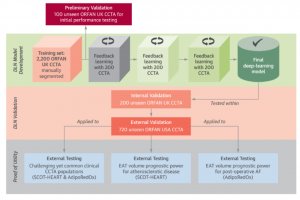
Deep-Learning for Epicardial AdiposeTissue Assessment
Epicardial adipose tissue (EAT) volume is a marker of visceral obesity that can be measured in coronarycomputed tomography angiograms (CCTA). The clinical value of integrating this measurement in routine CCTAinterpretation…
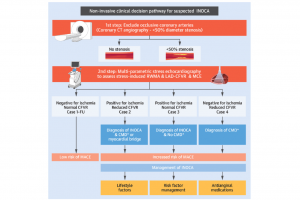
Multiparametric Stress Echocardiography in the Diagnosis of IOCA and INOCA
We present assessment of chest pain patients by multiparametric dobutamine stress echocardiography to differentiate inducible ischemia with obstructive coronary artery disease and with no obstructive coronary artery disease. In addition…
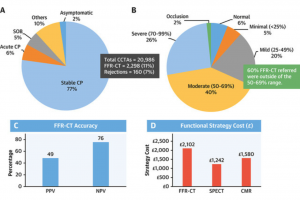
The Use and Efficacy of FFR-CT
There is a new release showing the reduced value of CT-FFR in chest pain assessment published as a pre release in JACC-Cardiovascular Imaging. The article can be found here.
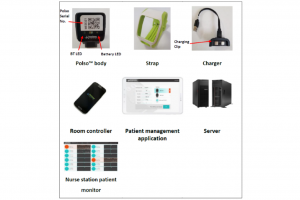
Wearing a wrist wearable device to measure vital signs
Wearable devices could be used to continuously monitor vital signs in patients who are hospitalized, but theyrequire validation. This study aimed to evaluate the clinical validity of the prototype of…
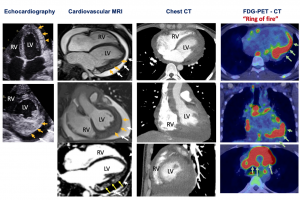
A diagnostic conundrum of a “ring of fire”
A 36-year-old man presented to our hospital with a 2-week history of palpitations in the context of 3 months of a dry cough, weight loss, and night sweats. The patient…
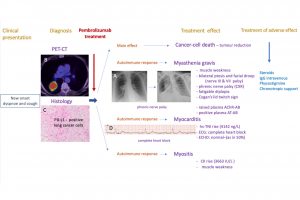
Myasthenia gravis, myositis and myocarditis: a fatal triad
We are pleased to advise our latest case report has been published on the BMJ. We wish to raise awareness of the triad of life-threatening complication of ICI therapy that…
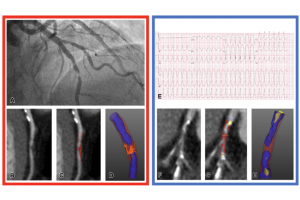
Distinguishing Type 1 from Type 2 Myocardial Infarction
The latest publication from the TCRG group is now available. It looks at how we can distinguish Type 1 from Type 2 Myocardial Infarction by Using CT Coronary Angiography. Please…
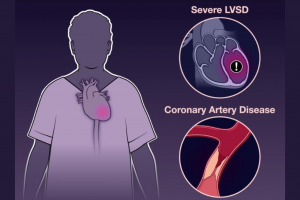
New research on percutaneous coronary intervention
There is an excellent video available on the NEJM. The video summarises new research findings on whether percutaneous coronary intervention when added to optimal medical therapy can improve outcomes in…
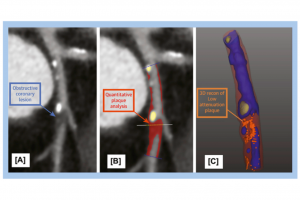
Plaque Burden and 1-Year Outcomes in Acute Chest Pain
In patients with stable chest pain, computed tomography (CT) plaque burden is an independent predictor of future coronary events. The purpose of this study was to determine whether plaque burden…
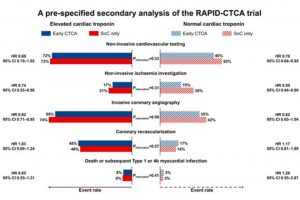
Presentation cardiac troponin and early computed tomography coronary angiography
A new article is available to read on the European Heart Journal. The aim is to evaluate the potential associations between presentation cardiac troponin and the clinical impact of early…
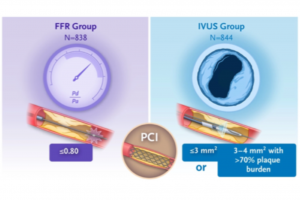
Fractional Flow Reserve or Intravascular Ultrasonography to Guide PCI
There is an excellent article on this topic to be found on the New England Journal of Medicine. Please click here to read it in full.
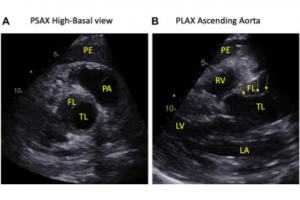
The Role of Point-of-Care Ultrasound in the Emergency Department
There is a new publication available to read. The full title is The Role of Point-of-Care Ultrasound in the Emergency Department: The Case of a Contained Rupture of the Ascending…
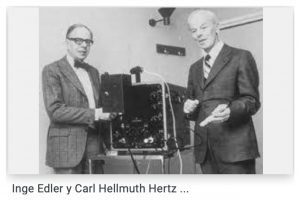
The origin of clinical echocardiography
The origin of clinical echocardiography dates back to the 1950s and is credited to Carl Helmuth Hertz and Inge Edler. If you wish to know more then please read this…
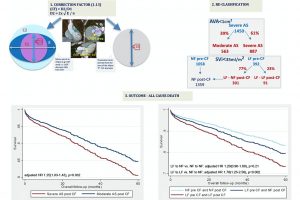
Results of CT-derived correction factor published
And the story goes on… After describing the “correction factor” derived from 400 CCTA images to improve accuracy using the echo based continuity equation in AVA and SV measurement (URL: https://lnkd.in/gFEK9QzD)…
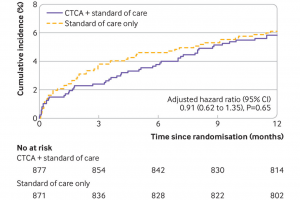
RAPID CTCA trial BMJ Publication
RAPID CTCA trial shows how non-inferiority of CCTA guided management compares to standard clinical care in patients presented with intermediate risk acute chest pain to ED. Our Research Group as…
